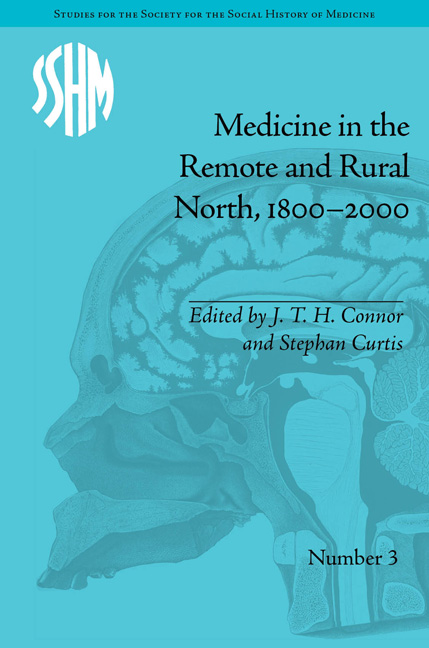Book contents
- Frontmatter
- CONTENTS
- Acknowledgements
- List of Contributors
- List of Figures and Tables
- Introduction: Cores/Peripheries – Rural/Remote: Medicine, Health-Care Delivery and the North
- Part I Remote Medicine and the State
- 1 Medical Services in a Northern Russian Province, 1864–1917
- 2 Changing Minority Culture: Health Services and Health Promotion in Northern Norway, 1900–50s
- 3 The Sami, Sami-ness and the Staffing of Health Services in Northern Norway, 1960s–2001
- 4 Foreshadowing the Future: Health Services in Remote Areas, the National Health Service and the Highlands and Islands of Scotland, 1948–74
- Part II Doctors and Doctoring in Remote Areas
- Part III Women, Health Care and the Practice of Medicine
- Notes
- Index
4 - Foreshadowing the Future: Health Services in Remote Areas, the National Health Service and the Highlands and Islands of Scotland, 1948–74
from Part I - Remote Medicine and the State
- Frontmatter
- CONTENTS
- Acknowledgements
- List of Contributors
- List of Figures and Tables
- Introduction: Cores/Peripheries – Rural/Remote: Medicine, Health-Care Delivery and the North
- Part I Remote Medicine and the State
- 1 Medical Services in a Northern Russian Province, 1864–1917
- 2 Changing Minority Culture: Health Services and Health Promotion in Northern Norway, 1900–50s
- 3 The Sami, Sami-ness and the Staffing of Health Services in Northern Norway, 1960s–2001
- 4 Foreshadowing the Future: Health Services in Remote Areas, the National Health Service and the Highlands and Islands of Scotland, 1948–74
- Part II Doctors and Doctoring in Remote Areas
- Part III Women, Health Care and the Practice of Medicine
- Notes
- Index
Summary
In the first three quarters of the twentieth century, contemporaries and historians have viewed the Highlands and Islands of Scotland as remote, whether measured by distance or accessibility. Yet, the provision of medical services in this region was important to central authorities. In 1913 legislation established a unique Highlands and Islands Medical Service (HIMS) to meet the problems of access to medical services in the islands and northern half of Scotland. Both contemporary politicians and, more recently, historians have argued that the HIMS was a model that helped pave the way for the new National Health Service (NHS) introduced throughout Britain in 1948. But, despite the role of the region in the establishment of the NHS, I will argue that discontent with the operation of the NHS in the area also later pointed the way to the first major reorganization of the NHS in 1974. The report of the Birsay Committee, a government committee investigating the medical services in the Highlands and Islands in the mid-1960s, highlights contemporary perceptions of the problems faced in providing medical services in remote areas of Scotland and responses to them. Notably, it was especially critical of the changes brought to the administration of medical services by the ending of the HIMS and advent of the NHS in 1948. Once again the experience of this remote area foreshadowed wider change.
- Type
- Chapter
- Information
- Medicine in the Remote and Rural North, 1800–2000 , pp. 75 - 90Publisher: Pickering & ChattoFirst published in: 2014



